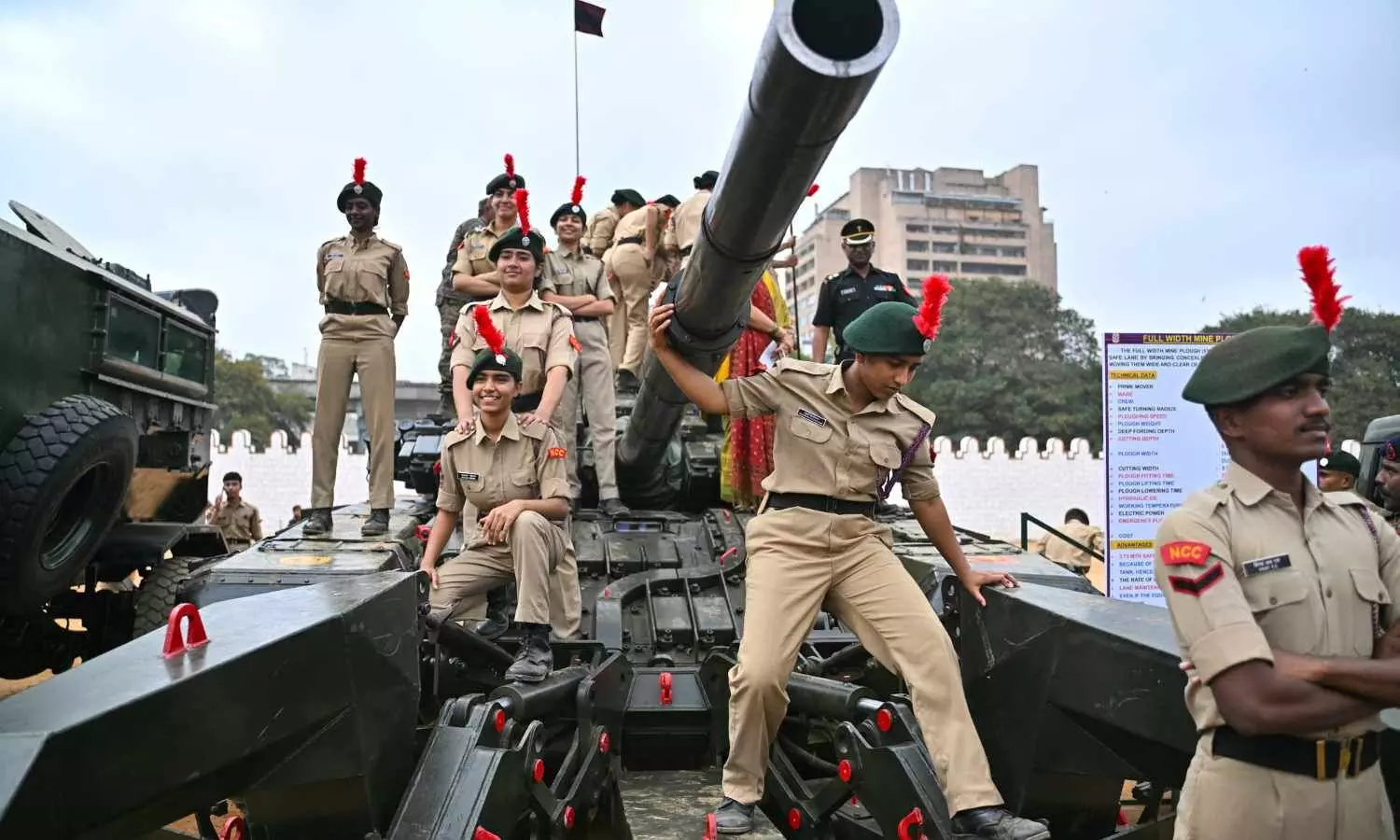India needs stronger defence push in 2026
India needs a stronger defence push in 2026 as strategic challenges rise, highlighting the need for modernisation, advanced technologies, and robust military preparedness.
India needs stronger defence push in 2026

India's military strategy is a multi-faceted approach that includes preparing for a two-front conflict, modernizing forces, and leveraging technology. Key elements are the establishment of Integrated Theatre Commands, enhancing conventional deterrence through advanced weaponry like the Rafale jets and P-8I aircraft, and developing new capabilities in cyber and space domains. The "Cold Start" doctrine remains a component, emphasizing rapid, limited operations against adversaries, while nuclear deterrence is a critical pillar.
Key defence activities for 2026 include India completing the delivery of the remaining S-400 air defence systems from Russia and pursuing the acquisition of 114 Rafale jets, while also working to meet a Rs 30,000 crore defence export target by March 2026. Additionally, the UK and India plan a defence joint venture in the UAE, and a major defence budget increase is expected in India for capital expenditures.
S-400 Air Defence Systems: Russia has committed to completing the delivery of the final two squadrons of the S-400 Triumf air defence system to India by 2026.
India aims to acquire 114 new multi-role fighter aircraft (MRFA), potentially the Rafale, with the deal possibly being signed in 2026. The plan involves the majority of manufacturing happening within India.
Deliveries for a separate deal for 26 naval Rafale-M jets, signed in April 2025, are scheduled to begin from 2028 to 2030.
The Indian Navy's tender for four advanced Landing Platform Dock (LPD) warships, worth approximately ₹80,000 crore, might see contracts finalized by 2026. If so, the first vessel delivery is projected for around 2031.
A defence joint venture between Leonardo and EDGE is planned to launch in the UAE in 2026.
Focus on Indigenous Production and Targets
India's defence budget for FY 2025-26 is ₹6,81,210 crore, with a significant 13% increase in capital outlay for new equipment acquisition. The government may also add supplementary funds to speed up local production.
India is aiming to achieve ₹30,000 crore (around $3.6 billion USD) in defence exports by March 2026.
"Make in India" Push: The government continues to emphasize indigenous manufacturing, with domestic procurement expected to rise. The value of Indian defence production is projected to exceed ₹1.60 lakh crore between 2025 and 2026.
Development of the BrahMos-X missile with enhanced speed (Mach 4.5) is being fast-tracked to meet a 2026 deadline.
Bharat Electronics Limited (BEL) is targeting a ₹30,000 crore order for the Quick Reaction Surface-to-Air Missile (QRSAM) system by 2026.
These activities are part of India's broader strategy to modernize its military and become self-reliant in defence production, while reducing dependence on foreign suppliers amid regional tensions
India is strategically advancing its use of AI to strengthen its defence capabilities, enabling faster and more accurate decision-making, minimizing human errors, and enhancing operational efficiency to address evolving security challenges.
AI is being applied in defence for various purposes, including AI-driven intercept management, predictive maintenance systems, decision intelligence, and target tracking and identification.
Advancing Military Dominance with Autonomous Systems and Robotics: The rapid development of autonomous defence systems and technologies is becoming a crucial element of military dominance.
The Indian Armed Forces are increasingly incorporating unmanned aerial vehicles (UAVs) for a variety of roles, including reconnaissance, combat, and logistics support.
Robotics technology is also gaining significant attention, with innovations like the ‘NETRA’ UAV, an indigenous unmanned aerial vehicle designed for surveillance and reconnaissance missions.
Additionally, the DRDO's Remote Operated Vehicle (ROV), Daksh, serves as a versatile tool for detecting and managing improvised explosive devices (IEDs), conducting surveys of nuclear and chemical contamination, and handling hazardous materials.
Enhancing Defence with Cybersecurity and Electronic Warfare: Cybersecurity and electronic warfare (EW) are essential for detecting anomalies, countering intrusions, and adapting communication protocols in real time.
The National Technical Research Organisation (NTRO) and the Defence Intelligence Agency (DIA) are investing in advanced technologies and developing specialized cyber defence units.
The electronic warfare networked command, control, communications, computers, intelligence, surveillance, reconnaissance (C4ISR), and advanced sensor systems, including those used in Operation Sindoor with Rafale and Tejas aircraft, enhance India's capability to disrupt enemy communications and radar systems.
Additionally, the DRDO has developed jamming systems like the advanced EW system ‘Shakti’.
Revolutionizing Defence Manufacturing with 3D Printing: In India, one of the significant advancements in defence manufacturing is additive manufacturing, particularly 3D printing, which is revolutionizing defence production.
The adoption of 3D printing enables rapid prototyping and the creation of complex components, thereby reducing costs and shortening lead times for developing critical items such as missiles, UAVs, and protective gear.
Additionally, Hindustan Aeronautics Limited (HAL) and Wipro3D have partnered to 3D print metal parts for aero engines, further enhancing India's defence manufacturing capabilities.

